
| Krasilov |  |
| Manivtsy Mass Graves Memorials |
| On May 24, 2018 near the village of Manivtsy in Ukraine a ceremony was to be held in honor of those Jews killed there by the Germans and who now lay in the mass graves there. The restoration of those graves was completed last year. |
| Summery of the May 24, 2018 Ceremony |
| Letter to organizers of Ceremony |
| History of the
murder sites - post Holocaust |
| Links to related
stories and web sites |
| Map of Mass Grave sites |
| Mass grave
memorials in 2013 and after restoration in 2017 |
||
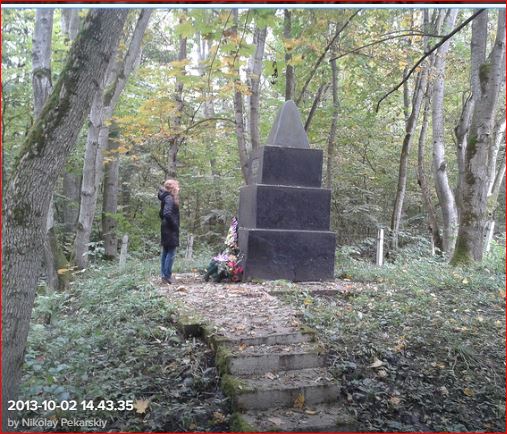 |
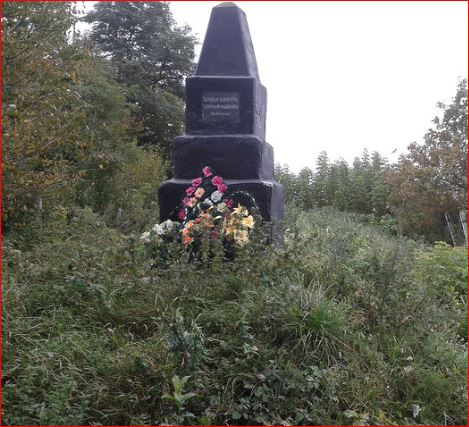 |
 |
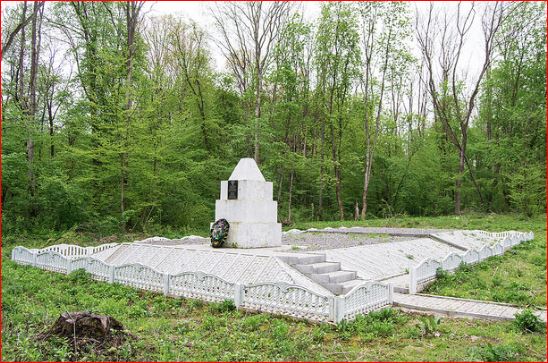 |
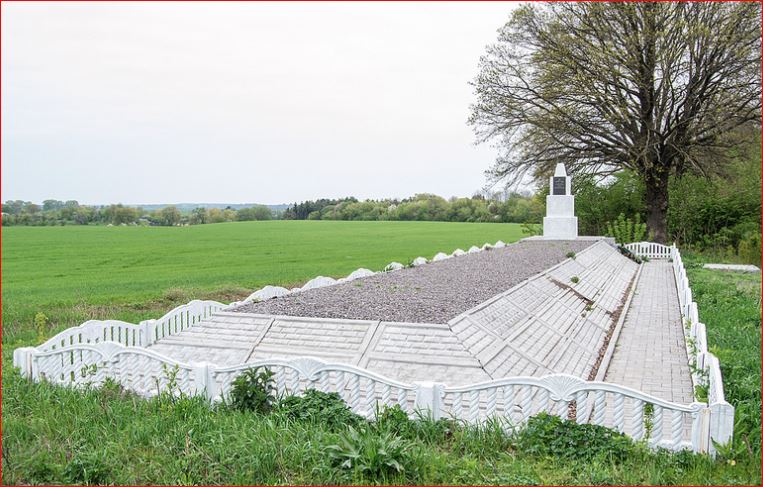 |
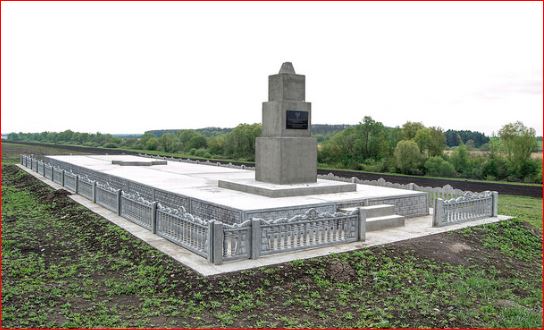 |
 |
 |
 |
 |
 1947 Visit to Mass Grave link |
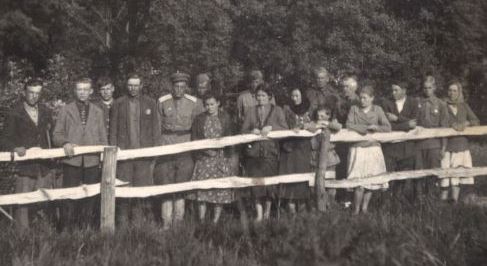 1944 Visit link |
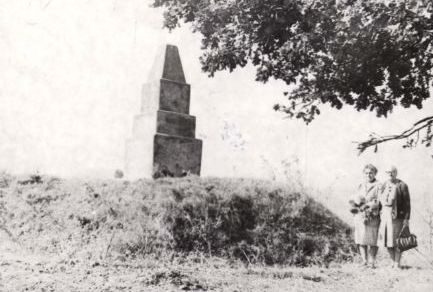 1975 Visit link |
 1984 Visit link |
| A
Summary of the May 24, 2018 Ceremony The Memorial consists of three mass graves, which are in the Khmelnitsky region. Two of the graves are near the village of Manivtsy, and the third one is in the field near the village of Rosolovtsy. Both villages are not too far from each other. In the Rosolovtsy graves the Germans buried the bodies of so called “specialists” Jews. The ceremony took place near the two graves near Manivtsy. Below is the information about the official ceremony. It is based on the letter and videos provided by Nikolai Pekarsky. An opening ceremony in commemoration of victims of Holocaust took place on May 24, 2018 near the village of Manivtsy of Khmelnitsky region. In July of 1942, prisoners of Krasilov and Kultchiny ghettos were killed there. Among those in attendance were representatives of regional and local administrations, regional Jewish organizations, ethnographers, community organizers, students and journalists. Despite expectations, there were no foreign ambassadors and no fireworks. Before the ceremony, the regional Khmelnitsky authorities ordered to clear the ground around the graves. They also planted few small fir trees (you can see them on some photos). Nikolai wrote, “I can tell you that I really wished you were here. All of this became a reality thanks to your donations and organizational abilities. You made that day possible. Arkadij Winer was here with his relatives. I was with my spouse, her brother and my parents. My parents came to see what have kept me occupied for the last few years. They liked it.” Among the press representatives were a journalist from “Krasilovskij Vestnik” and an independent journalist Valentina Kritskaya. Also, people representing several different governmental organizations took video. The speakers were: 1. Deputy regional administrator 2. The Master of ceremonies read our letter translated to Ukrainian 3. Arkadij Winer 4. Nikolaj Pekarskij 5. A person who was introduced as a “former prisoner of a ghetto”. 6. Jew from a synagogue, who read a prayer [Note 2] Then, people laid flowers. [All photos in this report were by Leonid Zapadenko]  Photo#1: The opening of the ceremony, which started with a moment of silence in honor of victims of Holocaust  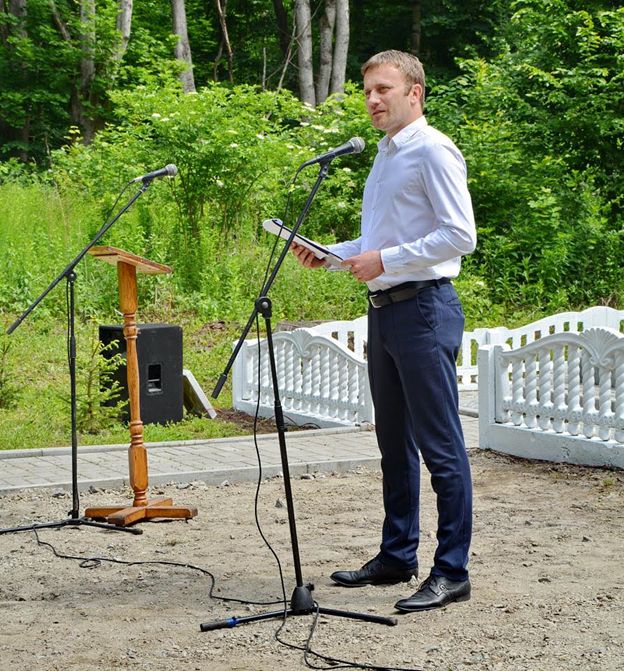
Photos #4, 5, 6 and 7: Speech of Arkadij Winer. He is 91years old now. In his speech he recollected how Jews were shot at this grave in July of 1942. He said that prior to the war his big extended family had lived in Manivtsy. After Germans arrived, the Jews from Krasilov and other nearby cities were put to ghetto established near the village of Kulchiny, and then transferred to a farm near the village of Rosolovtsy. The farm had a pigsty, horse stables, and a soap factory, and was not suitable for people housing. At the farm, Germans first selected men to dig huge pits, and then started to bring truckloads of Jews to those pits. Not all the people were shot, but they were forced to fall to the pits regardless – layer after layer. Arkadij Winer's family was in one of those trucks. Arkadij was 14 at the time, and he said to himself, “I won't go to the grave!” He managed to push a policeman who was next to him in the truck out of the vehicle and then jumped off himself. He was shot at and was wounded, yet he managed to hide in the reeds. A local teacher later helped him by treating his wounds and providing him with fake ID. Using that ID Arkadij could find work until the return of the Soviet Army. Significant portion of his speech were words of appreciation for the contribution of the regional and local authorities and business leaders to the project, specifically for building a road leading to the graves. He also sincerely thanked the Jews who made financial contributions, which was essential. He underscored the need to fight unauthorized digging of World War 2 graves in search for gold. He called on everyone not to forget history and consider the mass graves of Jews sacred places. 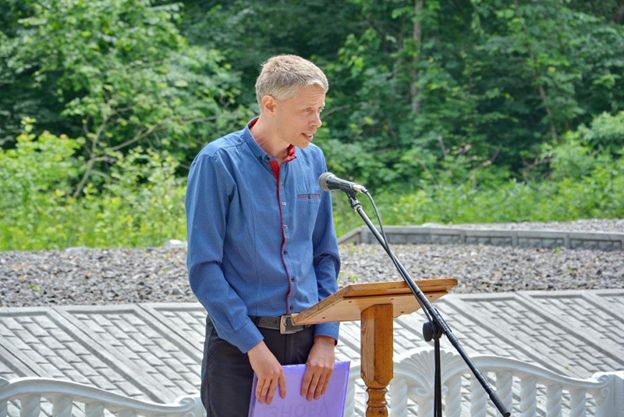 Photo #8: The speech of Nikolai Pekarsky, who was introduced as “local ethnographer”. He personally managed the restoration process. Nikolai told the story of Basya Tentser, who during the German occupation was saved in the house belonging to local Ukrainian Zhir family. They were Daryna Zhir, her daughter Vera, and son Vasilij. For 7 months, Basya lived with them until the return of the Soviet Army. On December 19, 1985, the Yad Vashem memorial in Israel added Darina Zhir and her children to the list of the righteous. 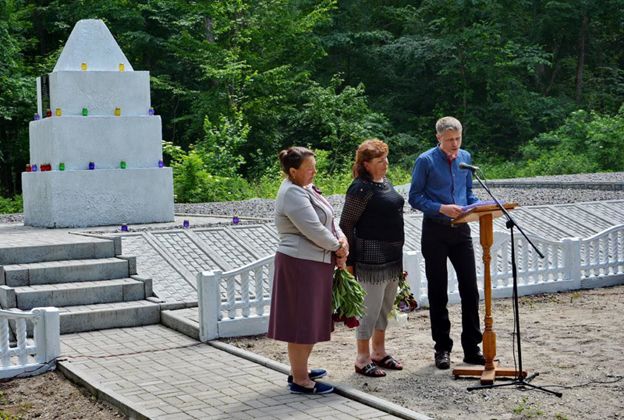 Photo #9: Nikolai Pekarsky invited Darina's granddaughters Nadezhda and Sofia Oroshkevich to the ceremony. They shared their recollections with those in attendance. Nadezhda and Sofia still stay in close touch with Basya’s son Isaak. After Nikolai Pekarsky's speech, there was a speech by somebody who was introduced as “prisoner of ghetto”. They only announced his first and middle name as “Leonid Osipovich”. He came from the city of Khmelnitsky. He had rather youthful appearance and sufficient spring in his walk. He spoke for about 5 minutes. He did not share any memories, but called on everybody to remember the cruelty of war and not to forget those who died. What was remarkable about his speech was his declaration that about one third of those buried in the graves were not Jews. “They killed everyone without sorting by nationalities!”, he insisted while waiving his hands to calm the energy of the moment. In his mind he was appeasing the public. 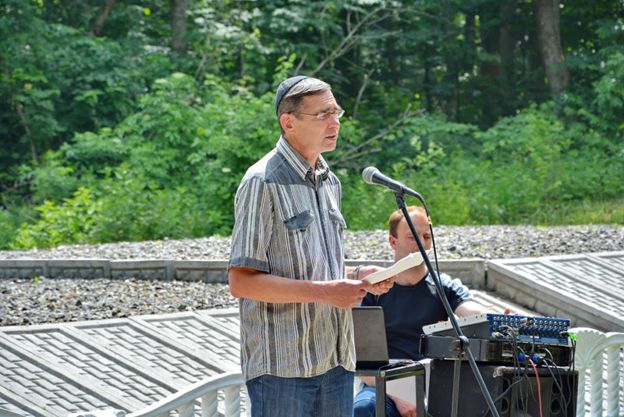 Finally, it was announced that the prayer would be said. The person who led the prayer was not introduced. We do not know neither his name nor who he was [Note 2]. He read Kaddish [Note 3] in Hebrew. After the Kaddish [Note 3], flowers were laid while a sad Jewish melody was played. That ended the ceremony. Some people left while others went to see the second grave. According to Nikolai, the whole ceremony was over within an hour. Nikolai Pekarsky comments: 1. The crowd was not big. He did not know how many people would be speaking. He blames that fact for his own speech being rather “unstructured”. While he planned to cover as many topics as possible, he had to make his speech shorter. 2. Nobody thought in advance about bringing flowers for Winer. Even the governmental bosses whom he has met a lot over the years never thought about that. Those bosses should have done the restoration work years ago. Winer spent a lot of effort asking them for assistance, and finally they did at least build a road, which was the entire scope of their help. 3. Nikolai expressed his opinion about the “prisoner of the ghetto” who said that about one third of the people buried there were not Jews. “It is inexcusable to make such unfounded declarations”, said Nikolaj. 4. An ethnographer from Kulchiny was also present on the ceremony. Just like Nikolaj, he is not as Jew, but he is deeply interested in the Jewish history of the region. He desperately wants to erect a memorial in memory of the Jews of Kulchiny, but nobody expresses any interest in helping him in that. A report on the event [in Russian] can be found on Nikolai Pekarsky web site. On the bottom of that page you will find several videos. They are in Ukrainian. The fifth video from the top shows the reading of Kaddish [Note 3], the next one shows laying the flowers. by L. Shkiler [Notes] [Note 1: Photos by Leonid Zapadenko] [Note 2: A worker from Khesed-Besht, Khmelnitsky (not from a synagogue)] [Note 3: Not the Kaddish but the prayer El male Rechamim (God full of Mercy). The same prayer was later performed by a Cantor through a tape recorder] |
| Map of Mass Grave Sites |
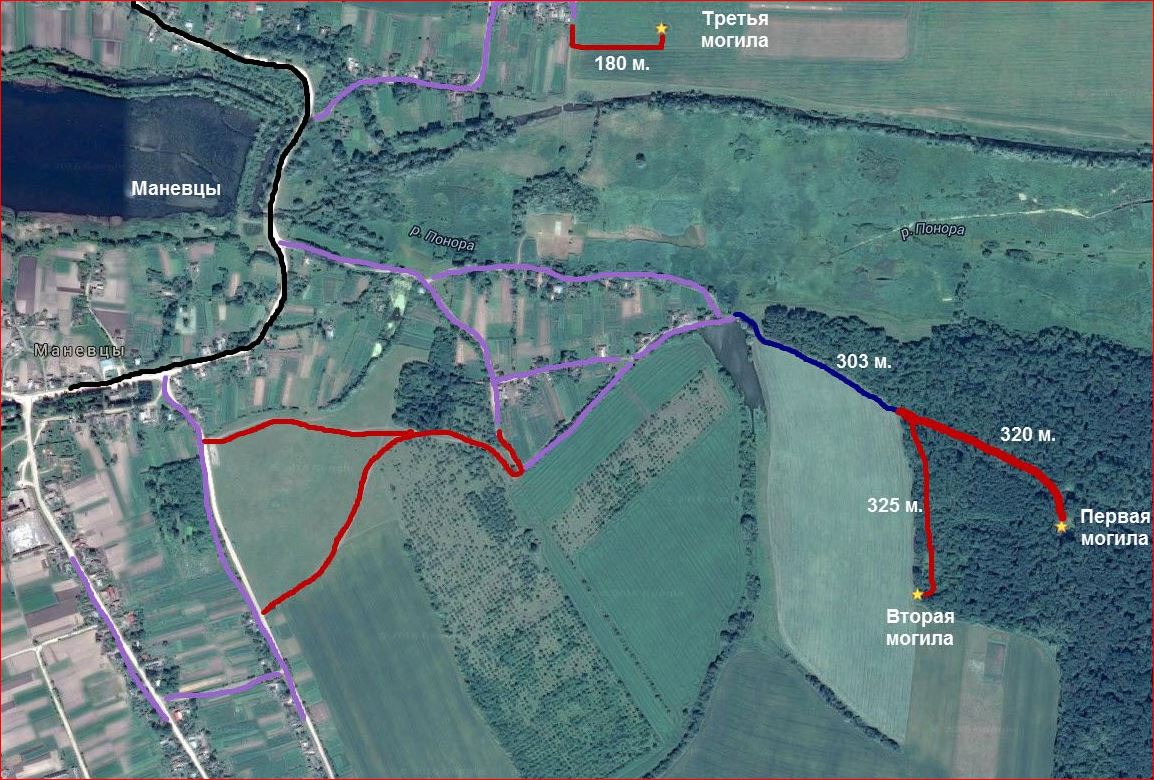 |
| Links to more
information about subjects mentioned on this page |
| Nikolai
Pekarsky web site article about the ceremony. |
| Manivtsy
and Orlintsy Camps USHMM |
| Arkady Winer story |
| Arkady
Winer letter to Soviet Authorities 1978 |
| Basya Tenser story parts 1, 2 |
| Pictures of Mass Grave site before - 2013 1,
2,
3 |
| Pictures of Mass Grave sites after - 2017 1,
2,
3 |
| Holocaust
information about Manivtsy and Krasilov including
eye witness statements |
| Yad Vashem "The Untold Stories" Murder
sites: Manivtsy
and Krasilov |
| Yad Vashem pictures and video related to
Manivtsy murders - Krasilov |
| Recent Satellite pictures of sites. Manivtsy,
two
sites with new monuments; third
site (looks like monument not yet complete at time
image was taken.) |
| Return to Home Page |
Copyright © 2021 Barry Chernick |